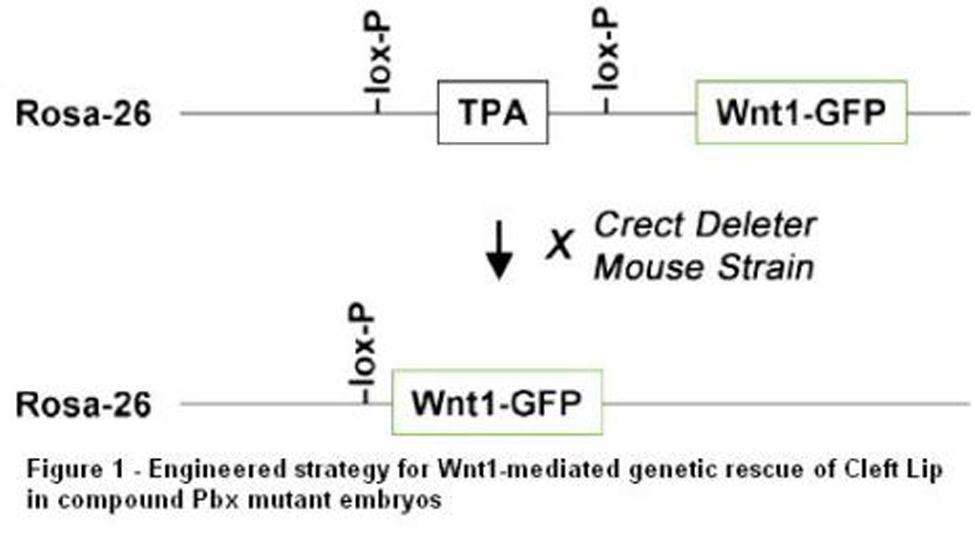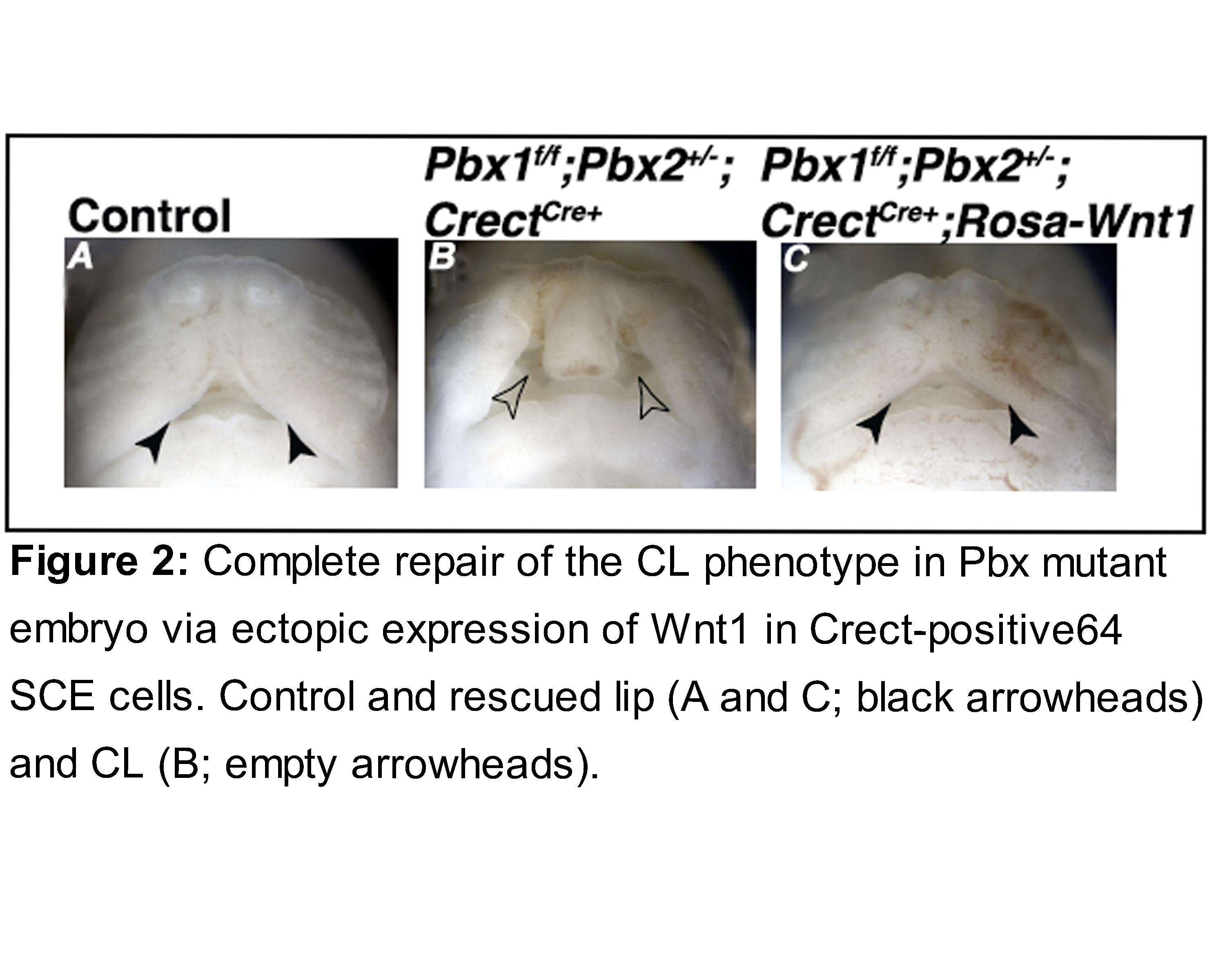|
Back to Annual Meeting Program
Repair of Cleft Lip in Utero by Reactivation of Craniofacial Developmental Programs
Elisabetta Ferretti, PhD, Karina A. Hernandez, D.O., Alyssa J. Reiffel, M.D., James Hart, DVM, Jason A. Spector, MD, FACS, Licia Selleri, PhD.
Weill Cornell Medical College, New York, NY, USA.
BACKGROUND: Cleft lip/palate (CLP) affects 1 in 500-700 live births and is the most common human craniofacial defect. Pbx homeoproteins have been linked to normal craniofacial development through activation of the transcriptional regulators Wnt9-Wnt3, which control apoptotic programs in the embryonic lambdoidal junction of the developing midface. Previous work has demonstrated that compound loss of Pbx results in fully penetrant CLP by disruption of Wnt9b-Wnt3 transcriptional regulation. We sought to restore normal facial morphogenesis in compound Pbx-deficient mice via genetic engineering and subsequent reactivation of genetic programs that control apoptosis.
METHODS: Mice globally deficient for Pbx1, Pbx2 or Pbx3 were used. We crossed compound Pbx mutant mice to the “Crect” deleter strain (which produces the protein Cre in superficial cephalic ectoderm [SCE] cells) to inactivate Pbx genes in the cephalic ectoderm. We engineered a strategy for genetic rescue of the cleft lip phenotype. A full-length Wnt1-GFP fusion construct was inserted into the murine ubiquitous Rosa-26 locus by homologous recombination in mouse embryonic stem cells, thus generating a Rosa-Wnt1 knock-in allele. Wnt1-GFP was placed downstream of a triple polyadenylation sequence (TPA), flanked by lox-P sites (Figure 1). Upon exposure to Cre recombinase, the TPA cassette was removed and Wnt1-GFP was readily expressed in SCE cells of Pbx compound mutant mice.
RESULTS: Progeny with genotype Pbx1flox/flox;Pbx2+/-;CrectCre/+;Rosa-Wnt1, in which Wnt1 is mis-expressed in SCE cells thus reactivating Wnt signaling at the lambdoidal junction, showed full correction of the cleft lip phenotype.
CONCLUSION: Our results show it is possible to use genetic rescue strategies to reconstitute Wnt signaling in Pbx compound mutant embryos exhibiting CLP, therefore correcting, at least in part, midfacial clefting. To our knowledge this is the first report of genetic correction of cleft lip in the mouse embryo. Our results will pave the way towards novel approaches for the genetic correction of this disfiguring malformation in utero, first in model systems such as mice and sheep, and ultimately in humans.
 
Back to Annual Meeting Program
|








